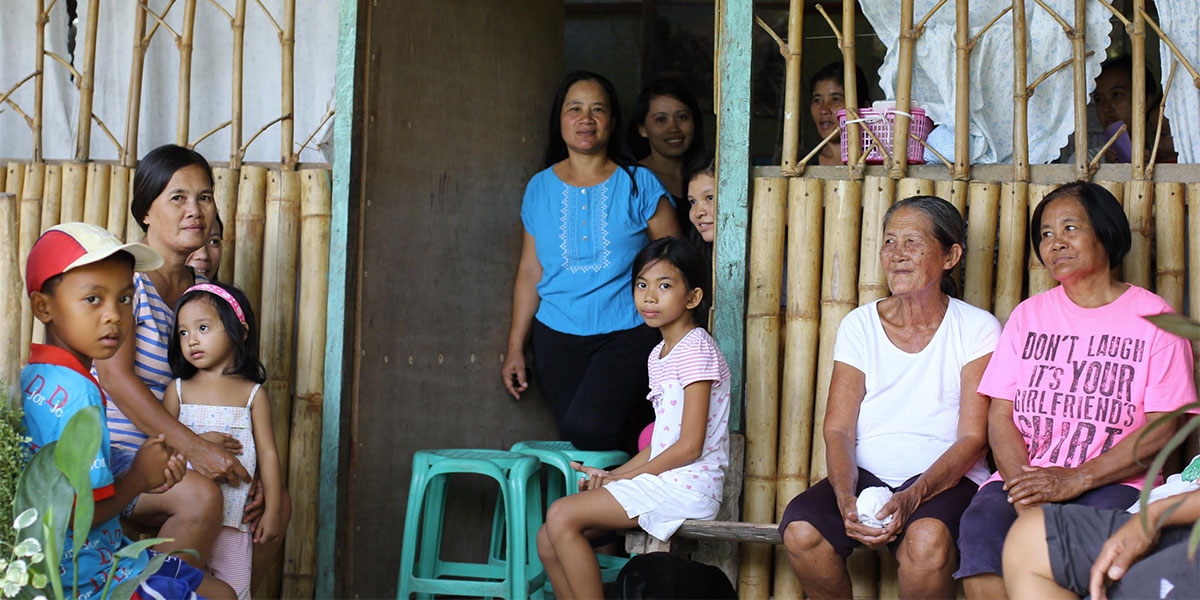With a swiftly changing climate comes rapidly rising sea levels, storm frequencies, and increased human inequalities. In the face of constant climate-induced instability, women are not only on the frontline of impacts but also at the forefront of solutions. Ever-worsening events like sea-level rise, hurricanes, wildfires, and other climate disasters drive the loss of homes and are some of the leading burdens for women. And as the climate crisis progresses, these extreme events are making adaptation near impossible and migration a necessity.
In conjunction with 70th anniversary of the Universal Declaration of Human Rights, the Sierra Club in collaboration with partners at United Nations Women released the report Women on the Move in a Changing Climate at the 24th annual United Nations Climate Negotiations in Katowice, Poland (COP24) on Gender Day.
The report is one of the first of its kind: exploring the many ways in which people across the gender spectrum are differentially affected by a rapidly changing climate, primarily focusing on women. Gender influences who moves (or stays), how decisions are made, personal experiences during movement, and the end results of said movement. Mobility simultaneously influences gender dynamics by further entrenching existing inequalities. For instance, following extreme weather events, such as Hurricane Katrina, there have been cases where trans women and gender-nonconforming people -- whose gender expressions did not match their available forms for identification -- were denied aid and/or were sent to the wrong gender response facilities. Similar examples were seen in Pakistan following floods in 2010, where single women and female heads of households were less likely to have the identification required by the government to access relief resources.
Although women are often portrayed as victims of climate impacts, what current discourse fails to highlight are women’s leadership roles in response to climate-related movements. Women on the Move in a Changing Climate asserts that women in communities, as those closest the issues at hand, are the ones who are already responding to climate impacts, including those that relate to mobility. As illustrated by a review of literature and stories from women leaders on the ground, women are already in both formal and informal roles of leadership: coordinating community movements, adaptation to climate impacts, and recovery from disasters.
Highlighted in the report are stories from women leaders in communities impacted by the climate crisis in Colombia, the Philippines, and the United States. Each woman was presented with a challenge and each chose action:
-
Damiana María Tovar Guzman from northern Colombia illustrates adaptive migration during protracted drought to keep her family fed and maintain her family’s land to cultivate once rains returned.
-
Chantel Comardelle, Executive Secretary of the Isle de Jean Charles Biloxi-Chitimacha-Choctaw Tribe, leads relocation efforts with Tribal leadership serving on a steering committee of the tribe’s relocation efforts as their community faces historic sea-level rise, hurricanes, and coastal erosion.
-
Lorna Ortillo worked in her local women’s groups to lead evacuation and recovery from displacement after Typhoon Haiyan in her coastal village of Sabang in the Philippines.
Damiana María Tovar Guzman – Vereda Los Cedros, El Carmen de Bolivar, Bolivar, Colombia; Chantel Comardelle - Isle De Jean Charles, Louisiana, United States; Lorna Ortillo - Sitio Sabang, Barangay Tinabangan, Marabut, Samar, Philippines
The release of the 2018 Intergovernmental Panel on Climate Change (IPCC) Special report continues to make it clear that action is pivotal to address the climate crisis. Now more than ever, our global climate actions must reflect the solutions we want to see -- solutions that respond to the needs and demands of communities most impacted. Women are consistently leading the way in their communities, and their knowledge must be at the center of climate solutions. This new report should not serve as a definitive guide to the issue or a conclusive selection of stories, but rather as the beginning of a conversation -- and a movement -- to support women already doing the work in their communities. Let’s get to it, shall we?
